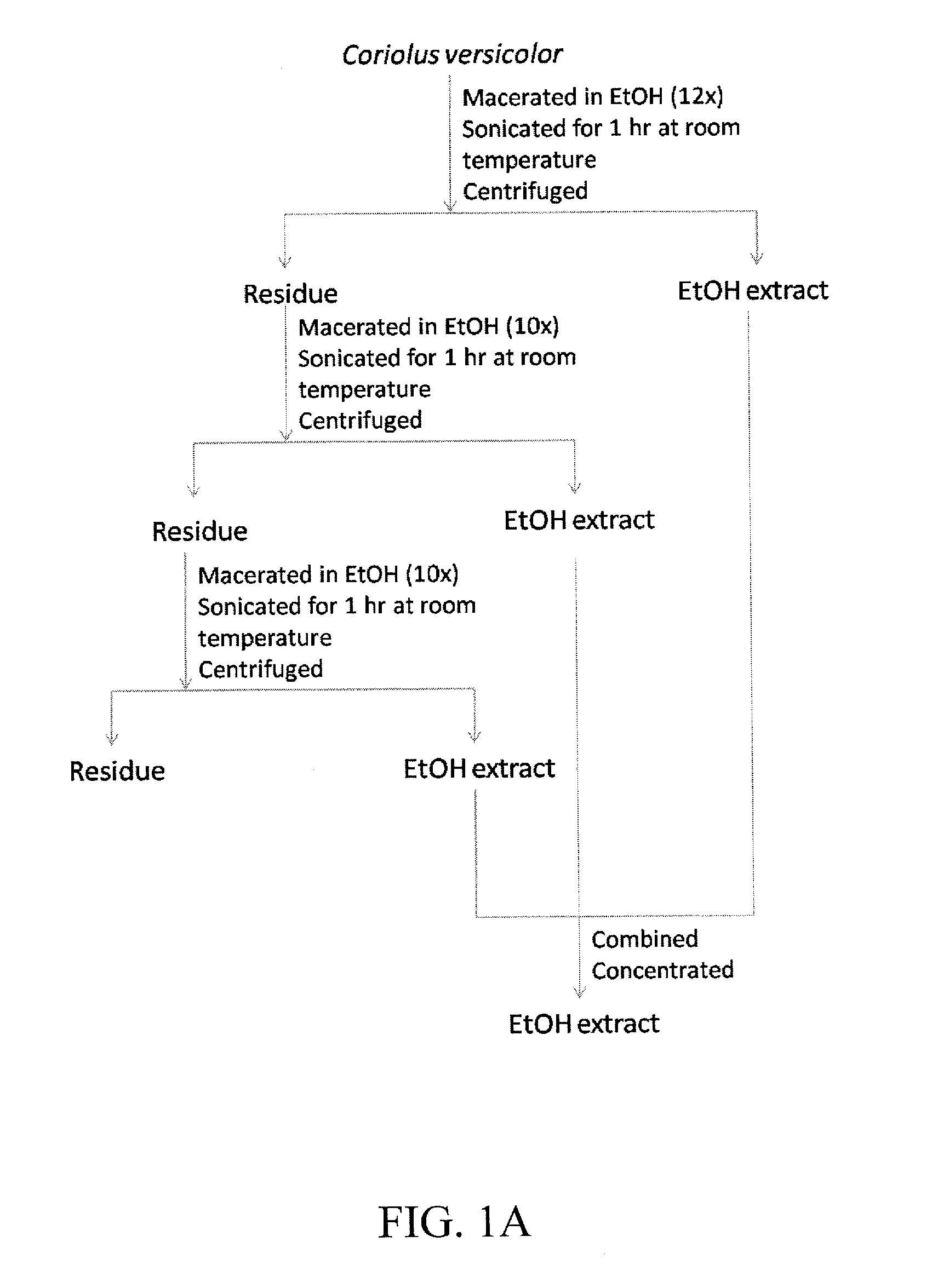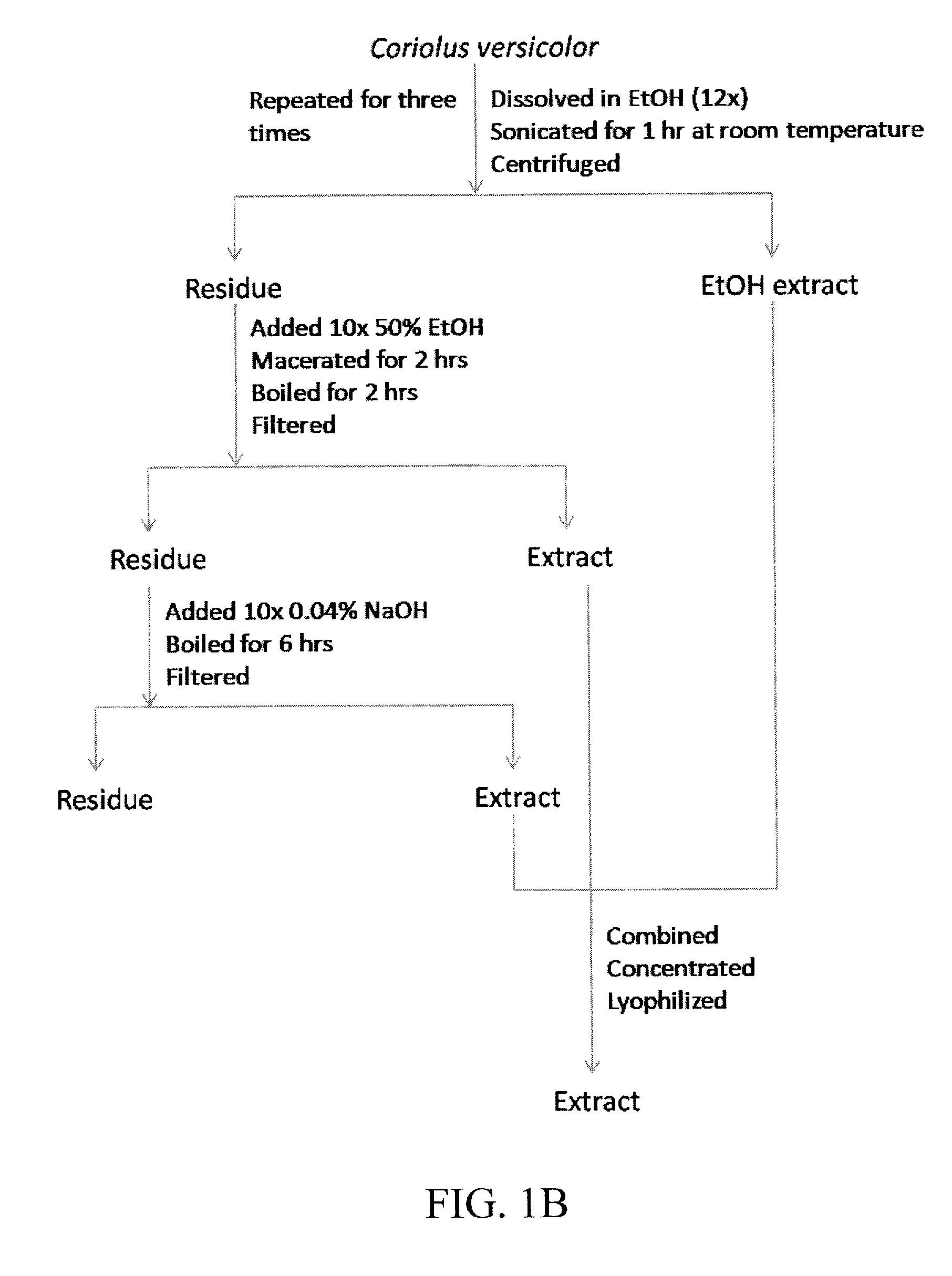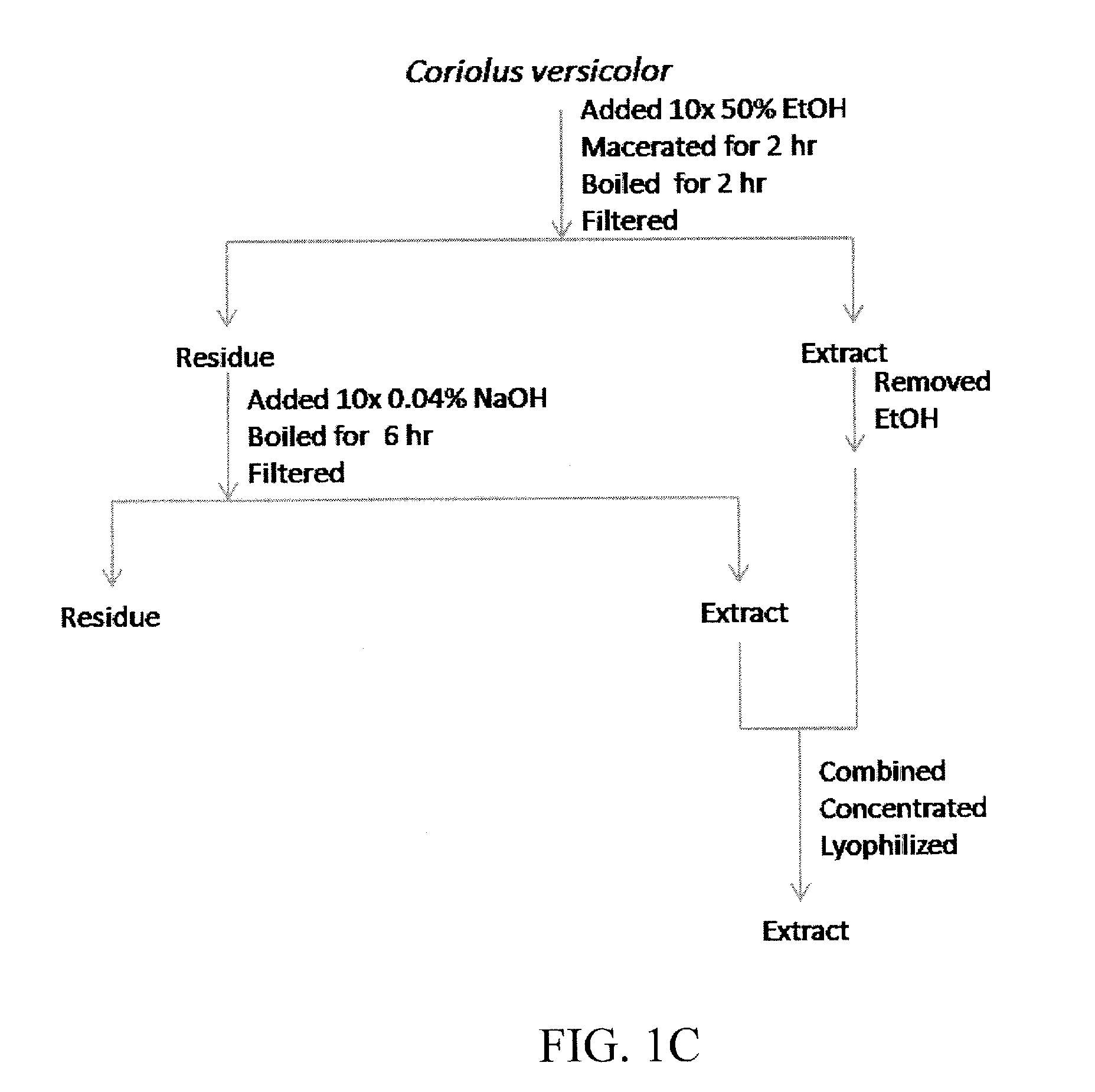Coriolus versicolor extracts, methods of isolating biologically-active compounds, and uses thereof
a technology of biologically active compounds and extracts, which is applied in the separation/purification of carboxylic acid esters, fatty-oils/fats, drug compositions, etc., can solve the problem of limited knowledge of the precise mechanism by which it exerts its pharmacological action, and achieve the effect of reducing or ameliorating the metastasis or invasiveness of tumors
- Summary
- Abstract
- Description
- Claims
- Application Information
AI Technical Summary
Benefits of technology
Problems solved by technology
Method used
Image
Examples
example 1
Preparation of Coriolus versicolor Extract
[0180]This Example illustrates preferred extraction schemes for preparing C. versicolor extracts.
[0181]FIG. 1A illustrates one embodiment of the extraction scheme. Briefly, raw materials of C. versicolor were macerated in 12-fold volume of EtOH, extracted for 1 hr with continuous sonication at room temperature, and centrifuged to yield ethanol extract and residues. The residues were macerated in 10-fold volume of EtOH and the extraction procedure was repeated twice as shown in FIG. 1A. The extracts were collected, combined, and evaporated to dryness under vacuum to produce granules comprising C. versicolor ethanol extract.
[0182]In an embodiment, raw materials of C. versicolor were macerated in ethanol for 18 hrs, and centrifuged to yield the ethanol extract and residues.
[0183]In an embodiment, milli-Q water is used as the solvent for preparing C. versicolor water extract. Briefly, raw materials of C. versicolor were macerated in 15-fold volu...
example 2
High Performance Liquid Chromatography Analysis of Coriolus versicolor Extract
[0187]This Example analyzes the chemical fingerprints of the C. versicolor extract by high performance liquid chromatography (HPLC). The C. versicolor extract was obtained using the extraction schemes illustrated in FIG. 1A, 1B, or by macerating the raw material of C. versicolor in ethanol for 18 hrs.
[0188]Briefly, one hundred ug / uL of the EtOH extract was subject to high performance liquid chromatography (HPLC) analysis using an Agilent 1200 series HPLC system (Binary Pump SL, G1312B) equipped with a PDA detector (G1315C) and an autosampler (G1367C). The chromatographic column (4.6×250 mm) was packed with ODS-bonded silica gel (Lichrospher 100 RP C18, EC 5 um), and the column temperature was maintained at room temperature during the separation.
[0189]Five microliters of the C. versicolor extract was injected into the HPLC system. HPLC was performed at a flow rate of 1.0 ml / min using a mixture of water and ...
example 3
Gas Chromatography-Mass Spectrometry Analysis of Coriolus versicolor Extract
[0190]This Example further analyzes the chemical fingerprints of the C. versicolor extract by gas chromatography-mass spectrometry (GC-MS). The C. versicolor extract was obtained using the extraction scheme illustrated in FIG. 1A or by macerating the raw material of C. versicolor in ethanol for 18 hrs.
[0191]The C. versicolor extract was subjected to silylation before analysis by GC-MS. In brief, 100 ul of the extract (30 ug / μL) in acetonitrile was transferred to a 1 ml reaction vial (Alltech), followed by the addition of 50 ul of pyridine and 50 ul of a derivatizing agent BSTFA [N,O-bis (trimethylsilyl) trifloroacetamide], which reacts with a wide range of polar compounds, thereby replacing labile hydrogen atoms of the polar compounds with a —Si(CH3)3 group. After incubation at 70° C. for 2 hrs, the mixture was ready for GC-MS analysis.
[0192]The mixture was analyzed by GC-MS using (GC: Agilent, 7890A; MS: Ag...
PUM
| Property | Measurement | Unit |
|---|---|---|
| Temperature | aaaaa | aaaaa |
| Temperature | aaaaa | aaaaa |
| Polarity | aaaaa | aaaaa |
Abstract
Description
Claims
Application Information
 Login to View More
Login to View More - R&D
- Intellectual Property
- Life Sciences
- Materials
- Tech Scout
- Unparalleled Data Quality
- Higher Quality Content
- 60% Fewer Hallucinations
Browse by: Latest US Patents, China's latest patents, Technical Efficacy Thesaurus, Application Domain, Technology Topic, Popular Technical Reports.
© 2025 PatSnap. All rights reserved.Legal|Privacy policy|Modern Slavery Act Transparency Statement|Sitemap|About US| Contact US: help@patsnap.com



